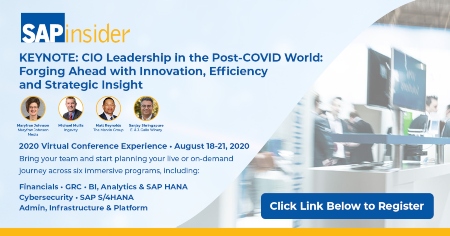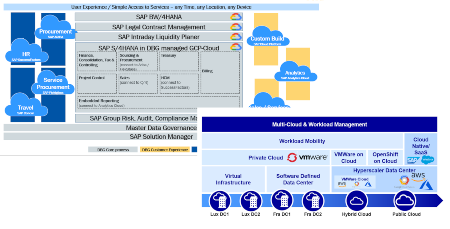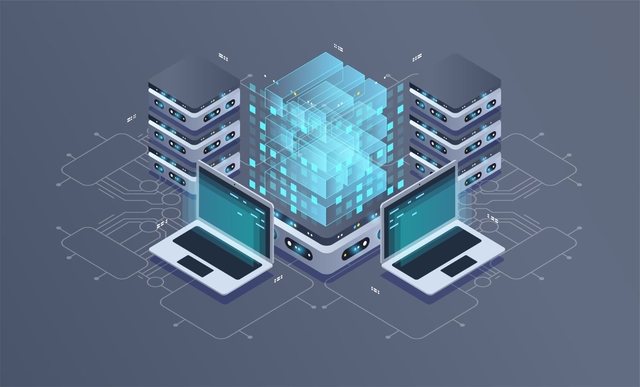SAP’s Connected Toolchain for Innovation
Meet the Experts
Key Takeaways
⇨ Many customers are struggling to adopt AI and leverage SAP's cloud-based solutions, with only a fraction of the customer base currently utilizing RISE with SAP.
⇨ The day 2 keynote highlighted that while technology increases, it does not always correlate to better business outcomes, emphasizing the need for SAP to address productivity challenges amidst increased tool complexity.
⇨ SAP aims to enhance transformation efficiency by integrating AI across its connected toolchain, set to make transformations 30% more cost-effective and 35% faster, while addressing existing barriers to AI adoption among customers.
Thomas Saueressig, Head of Customer Services and Delivery for SAP, kicked off the second day of Sapphire with a more realistic look at the SAP ecosystem which included that many customers are currently unable to leverage Joule or AI across their enterprises. Saueressig added that though 8,500 customers already run RISE with SAP, that number is only a portion of the over 25,000 customers that have already moved to or licensed SAP S/4HANA or the more than 30,000 that may still be running an older SAP ERP system. This reflects the reality that SAP must address if they are to move customers into the cloud-based vision and transformation they have highlighted this week.
However, AI still played a major role in Saueressig’s keynote. He emphasized that the “productive use of AI is a challenge, and customers perceive it as difficult to adopt AI.” This was backed up by an audience survey Saueressig conducted which highlighted data, cost, security, trust, and data quality as the biggest challenges in adopting AI. Saueressig talked about the value of data but, even though SAP’s AI focus is on reliability, relevancy, and responsibility in AI, more will be done before customers start entirely trusting what AI is telling them. Something backed up by Saueressig’s comment that “Productive use of AI is a challenge, and customers perceive it as difficult to adopt.”
More Technology Doesn’t Drive Better Outcomes
An interesting highlight from the keynote was that ten years ago a $10 billion company only ran 10 enterprise applications. Today that number is 600, an exponential increase in technology. Aligned with that statistic is that between 1995 and 2005, the first real wave of ERP-type solutions, global productivity grew by 2.6% . However, between 2005 and 2025 that growth was only 1.5%. Highlighting these figures, Saueressig stated: “More technology doesn’t necessarily mean better business outcomes.” This is another challenge that SAP will need to face as it continues to introduce more technology across their solutions.
Explore related questions
The major challenges SAP hopes to address for customers include reducing the cost of transformation, providing faster time to business value, increasing business agility, and introducing faster continuous innovation. With the average cost of transformation being reported by Saueressig as $700 million, something SAP wants to help reduce, it is no surprise that there is a significant bar to adoption.
Connected Toolchain for Transformation
One way to achieve this is the way that SAP is incorporating AI across what Saueressig called the “connected toolchain.” This will allow customers to use SAP Signavio to gain transition guidance, leverage an AI agent hub in SAP LeanIX to create an architecture, leverage cross-SAP Business Suite integration in WalkMe, and wrap that up with AI-powered transformation capabilities in SAP Signavio. To make this happen, Saueressig highlighted: “AI will be omnipresent across the entire toolchain.”
In an onstage demo, Joule in SAP Signavio was used to determine the best path to take for an organization looking to innovate. Interestingly, the recommendation was to use a system conversion that is paired with continuous innovation since SAP understands that may be the best option based on systems. From there, SAP LeanIX provided a target architecture based on the reference catalog. The entire project plan was then digitized in SAP Cloud ALM based on the RISE with SAP methodology. Although only mentioned briefly on stage, a new tool called Klario from Basis Technologies was mentioned as identifying what needs to be changed. Klario is a decision support platform built to help SAP Cloud ALM customers manage change more intelligently. It uses aggregated insights from SAP implementations to help organizations understand how change can be delivered. The end of the demo then used Tricentis Test Automation to integrate testing into the transformation process.
SAP’s goal is to make transformations 30% more cost effective and 35% faster. The demo emphasized that this is not something that will be available later this year but is already available today with the integrated toolchain. Saueressig referenced the 14 validated partners with RISE with SAP that are helping make this possible, including at least three who were advertising on the Sapphire show floor that they are supporting a reduced cost move to RISE with SAP S/4HANA Cloud.
The last part of the Day 2 keynote discussed changes that SAP is making to its services portfolio. This will start with a change to the support tiers that will start in 2026 and will be soft launched this year. It will start with Foundational support, move to Advanced support, and at the top will be Max as in the past. As an example of how these will work, all customers with the foundational plan will have Joule enabled by SAP. For those in the advanced plan, SAP will build and activate embedded AI cases. With Max, SAP will help define a holistic AI strategy.
What This Means for SAPinsiders
Saueressig’s keynote was refreshing. Although he was joined on stage by three different customers who were all using SAP S/4HANA Cloud Public Edition–Mercedes Benz, Phoenix Global, and Mars–there was an admission that not every customer is currently able to embrace SAP’s AI vision. Moreover, Saueressig noted that there are barriers to AI adoption. SAP is working to address these challenges while, continuing to build AI into many of the tools that will help customers accelerate their transformation journey.
However, the connected toolchain that Saueressig discussed would require a customer to license SAP Signavio, SAP LeanIX, and SAP Cloud ALM—tools that are not necessarily seeing significant adoption in the SAP space. SAP Signavio is one of the least understood tools in the RISE with SAP offering, and SAP LeanIX is of interest to Enterprise Architects but has not been broadly adopted since SAP acquired the company. SAP Cloud ALM, as the cloud-based replacement for SAP Solution Manager, is seeing interest, but doesn’t offer on-premise functionality which is limiting adoption to those that are moving SAP solutions to the cloud.
Despite the challenges faced today, SAP is firmly committed to a plan that brings AI to everyone across every application. They are also working to provide the tools and capabilities to make innovation cheaper and more streamlined. How this is received by customers remains to be seen, but it does demonstrate that SAP is listening to customers and understands at least some of the challenges they face today.









